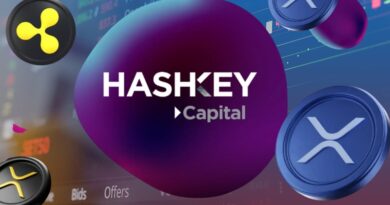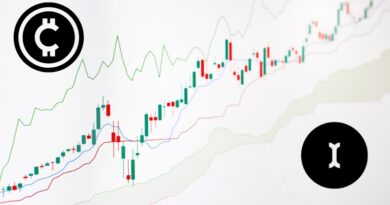Boosting Growth in Tokenized Credit Market Through Cross-Border Payments
The financial world is going digital, and one area seeing rapid transformation is credit. Thanks to blockchain technology, credit can now be tokenized—turned into digital assets that are easier to manage, trade, and access. But here’s the thing: for tokenized credit to really grow, we need a better way to move money across borders.
That’s where cross-border payments come in. Let’s break this down.
What Does Tokenized Credit Mean?
Imagine a traditional loan. It’s a legal agreement, mostly paperwork, between two parties. With tokenization, this loan becomes a digital token you can transfer safely on a blockchain network.
So instead of a document in a filing cabinet, the loan becomes:
- Transparent — anyone can verify it exists
- Tradeable — you can buy or sell it like a stock
- Programmable — you can automate interest payments or loan terms
Sounds great, right? And it is. But there’s a roadblock.
The Growth Challenge: Moving Money Around
Tokenized credit systems are growing. They allow regular people and businesses to lend and borrow using digital tokens. But for global adoption, these systems need fast, reliable, and cost-effective cross-border payments.
Why? Because capital—money—doesn’t stay in one place.
An investor in Europe might want to fund a loan in Africa. Or a small business in Latin America might want to tap into funding from Asia. But today’s traditional payment networks charge high fees, take days to complete transactions, and lack transparency.
Here’s what that means for you:
- Higher lending costs because payment delays affect pricing
- Limited access to global credit markets
- Fewer options for both investors and borrowers
Tokenized Lending Platforms Are Already Making Waves
Platforms like Centrifuge and Goldfinch are good examples. They connect real-world borrowers to crypto investors using blockchain. Instead of relying on banks, these platforms create pools of tokenized loans.
And it works. Centrifuge helped SMEs (small and medium enterprises) tap into nearly $350 million in credit by tokenizing real-world assets like invoices and loans.
But again, cross-border barriers hold back their full potential.
Breaking Down the Cross-Border Problem
So, what’s wrong with the way we move money internationally?
Well:
- Fees are high. You might pay up to 10% just to transfer money abroad.
- Speed is slow. Some payments take days, especially to emerging markets.
- Lack of transparency. You don’t always know where your money is—or why it’s delayed.
- Currency conversion adds another layer of cost and complexity.
All of this makes it harder to grow global tokenized credit markets. Investors hesitate because of costs and delays. Borrowers face limits on who can fund them.
So, how do we fix this?
Enter Digital Assets and Blockchain Infrastructure
Blockchain wasn’t designed just for trading crypto—it can also solve fundamental banking problems. With digital stablecoins (cryptocurrencies tied to traditional currencies like the U.S. dollar), we’re seeing near-instant, low-cost, borderless payments.
These aren’t just theoretical solutions either—real-world tools like USDC and blockchain rails like Stellar and Polygon are already in action.
Let’s say you’re in Kenya and you want to borrow $10,000. An investor in the U.K. can send that amount within minutes using stablecoins, without involving high-fee middlemen. You get the funding faster, and they start earning interest right away.
Big Institutions Are Paying Attention
You might think this is just a crypto trend, but take a closer look. Traditional financial giants are exploring this too:
- Visa and Mastercard are working on solutions tied to blockchain rails
- Central banks around the world are testing central bank digital currencies (CBDCs)
- J.P. Morgan and BlackRock are experimenting with tokenized assets and blockchain settlements
When large institutions jump in, it’s usually a sign the transformation is real and not just hype.
Why This Matters for Emerging Markets
People in regions like Africa, Southeast Asia, and Latin America often lack access to affordable credit. Local banks may be too risk-averse, leaving many borrowers with few good options.
Tokenized credit—when paired with seamless cross-border payments—can:
- Bring more capital to underserved areas
- Lower borrowing costs by removing middlemen
- Provide better investment returns for global funders
Think of it like this: a business owner in Nigeria could access funding from a retiree in Canada through a blockchain-based platform. Everyone wins.
How Tokenized Credit + Payments Unlocks Global Lending
This is where things get exciting. When you combine tokenized credit with efficient cross-border payments, you create a full-circle financial model that can scale globally.
Here’s how it works in practice:
- Borrowers upload real-world collateral (like invoices or receivables)
- The platform issues tokenized loans secured by those assets
- Global investors buy those tokens and fund the loans
- Stablecoins or digital currencies are used to move funds instantly
- Smart contracts automate repayments, interest, and tracking
This isn’t a future concept—it’s already happening. But it needs more adoption.
What Needs to Happen Next?
To scale the tokenized credit industry and improve cross-border payments, a few things are needed:
- Better regulatory clarity: Governments must define how digital assets can be used safely
- More partnerships: Banks, blockchain platforms, and fintech must work together
- Stronger infrastructure: Secure, fast blockchain networks with global reach
- User education: People and businesses need to understand the benefits of switching
Without these, we might see the growth of tokenized credit stall.
So, What Can You Do as a Participant?
Whether you’re a borrower, lender, developer, or just curious, here’s how you can get involved:
- Explore DeFi lending platforms like Goldfinch, Maple, or Centrifuge
- Use stablecoins for faster and cheaper transactions
- Stay informed by watching how regulators approach digital assets in your region
- Talk to your network about the real potential of tokenized credit
Change happens when more people understand what’s possible.
Final Thoughts
The future of lending is faster, fairer, and more global. Tokenized credit solves the problem of outdated, paperwork-heavy loans. Cross-border stablecoin payments solve the problem of expensive, slow international transfers.
Put them together, and you get a powerful engine for global financial inclusion. The tools already exist. What we need now is action.
Are you ready to take part in this shift?









